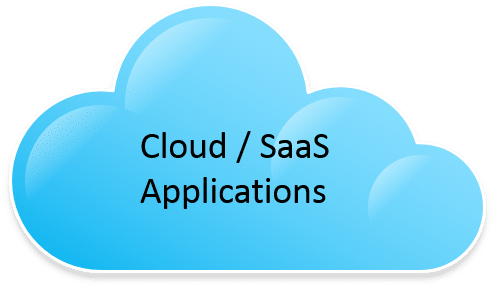I’ve talked to several companies over the past few weeks who believe that their software license management problems will disappear with the move to Cloud and SaaS delivery models. Unfortunately, your licensing challenges are not going away, however you will be dealing with a totally new set of problems:
- Hosted vs. On Premises: Certainly, one of the biggest advantages of moving to Cloud or SaaS based applications is reduced hardware infrastructure and personnel costs required to run business applications. The software asset management (SAM) challenge this presents is that, even today, most companies have a hard time discovering all of the machines and applications running on their own networks. Now, companies will need to get creative about inventorying hardware and applications that run in hybrid or public (Amazon, Rackspace, etc.) cloud environments. While the Cloud brings more flexibility, it also limits your visibility. New Software License Optimization tools are required that allow organizations to accurately inventory virtualized cloud environments.
- Subscription vs. Perpetual: With perpetual license models, companies typically true-up or renegotiate every three years. Although painful without an automated software asset management solution, companies spend lots of time preparing for these events. Since they only happen every three years, they seem somewhat manageable. With Cloud and SaaS applications, companies will need to insure they are optimized EVERY MONTH! A major challenge with SaaS applications is making sure that you are not over-spending on licenses, either because some people are not actually using the application, or because you have purchased the “Cadillac” (or Bentley) subscription when the Chevy would meet users’ needs.
- Usage-based Software License Models: Cloud and SaaS are making usage-based pricing more popular. The concept is simple and fair – pay for what you use. The challenge is that the pricing models are actually quite complex and based on a maze of different measurements such as disk space, high availability requirements, peak processing power, etc. Just like with your utility bills, trying to determine exactly what all the fees, services costs, taxes, etc. represent is daunting. Determining whether you are paying the optimal price for the service is not easy or transparent.
- Accurate Forecasting of Costs: One of the benefits of on premises, perpetual applications is a fairly predictable pricing and cost structure. With traditional applications, companies can forecast future spend fairly accurately. In the world of SaaS and Cloud based applications, forecasting future spend will be much more challenging. The pricing models can change, usage is not predictable, and there are not as many controls over growth or capacity demands. Companies are going to need to be much more diligent about making sure their licensing costs are optimized, transparent, and predictable.
- Audits May Even be More Painful: Software vendors are scrambling to keep up with the pervasive movement to Cloud and SaaS. Most vendors are introducing complex Product Use Rights governing how their applications can be used in the Cloud. Vendors are also adapting to how audits are performed in Cloud environments. The onus is going to be on companies to have the documentation required to prove compliance in the new world of Cloud software delivery.
The bottom line is that the movement to the Cloud or SaaS applications may actually amplify current problems with existing software asset management technology and processes. Companies can protect themselves by selecting future-proof Software License Optimization solutions that will meet their needs as their infrastructure evolves. Flexera is working diligently with both software producers and enterprise customers to solve these new license management challenges.






